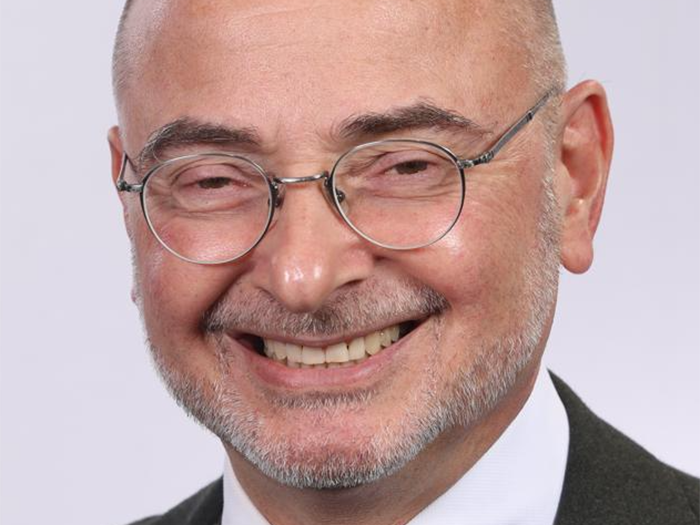Art Heists, Racehorses and Loch Ness: This Marsh Broker Shows a Career in Insurance Can Still Be Exhilarating

Alexandra Redfern is the rare broker who knew she wanted to work in insurance from a young age.
Most people in the industry tell a similar story about their career paths: They grew up thinking insurance was “boring” until they stumbled into a position as a broker or underwriter and discovered just how dynamic crafting policies and underwriting risks for clients could be.
What most brokers learn after years working in the industry, Redfern knew as a child.
Her father had worked insuring racehorses as a bloodstock contractor for Lloyd’s of London, and she was riveted by the stories he told.
He kept a framed insurance contract in his office from when he insured one of the most expensive stallions in history, and he boasted that he once brokered a policy for the Loch Ness Monster after a whiskey company offered a £1 million prize to any customer who located the creature.
“Hearing some of those stories really did pique my interest,” she said. “I came through to insurance in quite a traditional approach and that goes against the usual jokes you hear from many in the industry who just ‘fell into insurance.’ ”
These stories her father told her taught Redfern that the insurance industry is anything but boring, and her own career continues to be a testament to just how fascinating, lively and challenging a career as a broker can be.
She’s worked with clients ranging from private collectors to major museums, helping them to secure coverage for a variety of treasures, including a stolen piece of art that had to be transported back to its home at the University of Arizona Museum of Art.
Marrying Insurance to Art
Redfern’s career as a fine arts insurance broker began with the Willis Towers Watson graduate program, where she was placed in the fine art and species department. While she didn’t have a formal background in art, the placement felt like a natural fit as her love of art goes back almost as far as her interest in insurance.
Redfern said she was raised with an appreciation for art. When she lived in Manhattan as a child, her mother took her to the Met every weekend.
“It’s very much a personal interest,” she said. “My family has always promoted having an awareness and appreciation of art outside of the school classroom.”
The graduate program at Willis Towers Watson taught Redfern how to be strategic as a broker and how to always think a few steps ahead for her clients.
She attributes her success to this program and the guidance of her mentor, Richard Nicholson, then executive director of Willis Towers Watson’s fine arts, jewelry and species department.
“[He] is the most respected, experienced fine arts chap in the markets in London,” Redfern said.
Her current boss at Marsh and a 2019 Power Broker, Rose Proby, has also helped guide her through the insurance industry, which tends to skew white and male.
“I’ve really learned a lot from Rose in terms of client servicing and also showing me the pathway for women to be successful in this very much male- dominated environment,” Redfern said.
Redfern remained at Willis Towers Watson until 2017 when she joined Marsh as a vice president in the fine art, jewelry and specie department.
In this role, she reviews exposures her clients face daily, negotiates with the insurance market on their behalf and keeps them abreast of current market trends. She works with clients of all sizes from large museums to private collectors.
Reviewing exposures daily may seem excessive, but Redfern said that in the fine arts world, risks change that often. A private collector may acquire a new piece of art for their home. A museum might host a traveling exhibit that increases their exposures.
“They might be buying something. They might be hosting an exhibition. They might be building a new museum or borrowing an item,” Redfern said.
For Redfern, the top priority is keeping her clients happy despite shifting exposures. It is that dedication that earned her a 2021 Power Broker designation this year.
As part of her continued support of her clients, Redfern helped the University of Arizona secure coverage for a variety of items, including priceless works of art; world class photography collections; and scientific collections that include meteorites, tree rings and 1000-year-old artifacts.
When Redfern became the university’s broker, she secured broader coverage, helped implement a better bespoke valuation process, and significantly reduced the policy deductible.
“I get a great sense of achievement when something’s completed for a client, whether it’s finally getting them 100% capacity or finding an obscure coverage solution for them,” Redfern said.
After an Art Heist, She’s the Broker for the Job
Slashing deductibles while securing broader coverage isn’t the only tricky job Redfern has tackled for the University of Arizona.
In 1985 — long before Redfern was working in insurance — a man and woman arrived at the University of Arizona Museum of Art the day after Thanksgiving. While the woman distracted the guard, it is suspected that the man cut Willem De Kooning’s painting ‘Women-Ochre’ from its frame, rolled it up and hid it under his puffy winter coat.
The two then left the museum in a rush, alarming the guards, who ran to the second floor gallery only to find the piece missing, according to New York Times reporting.
The stolen piece is currently valued in excess of $100 million and remained missing for 31 years until an antiques store owner in New Mexico recognized the artwork at an estate sale and contacted the museum.
Once the painting was found, there was the challenge of transporting it back to its home. On top of concerns over art theft, the painting had been damaged from the heist.
“Obviously, it’s a fascinating story,” Redfern said. “We were dealing with a number of different stakeholders from the state itself and the museum on various logistics.”
Redfern stepped in and secured the coverage needed to transport the painting back to the museum from New Mexico. After it was returned, Redfern was able to visit the painting while it was undergoing restoration at the Getty Center in Los Angeles.
“It was nice to finally see it after it being such a highly talked about context for so long,” Redfern said. &











